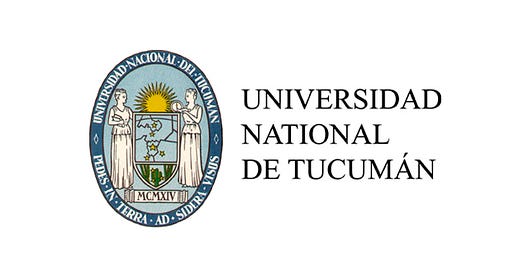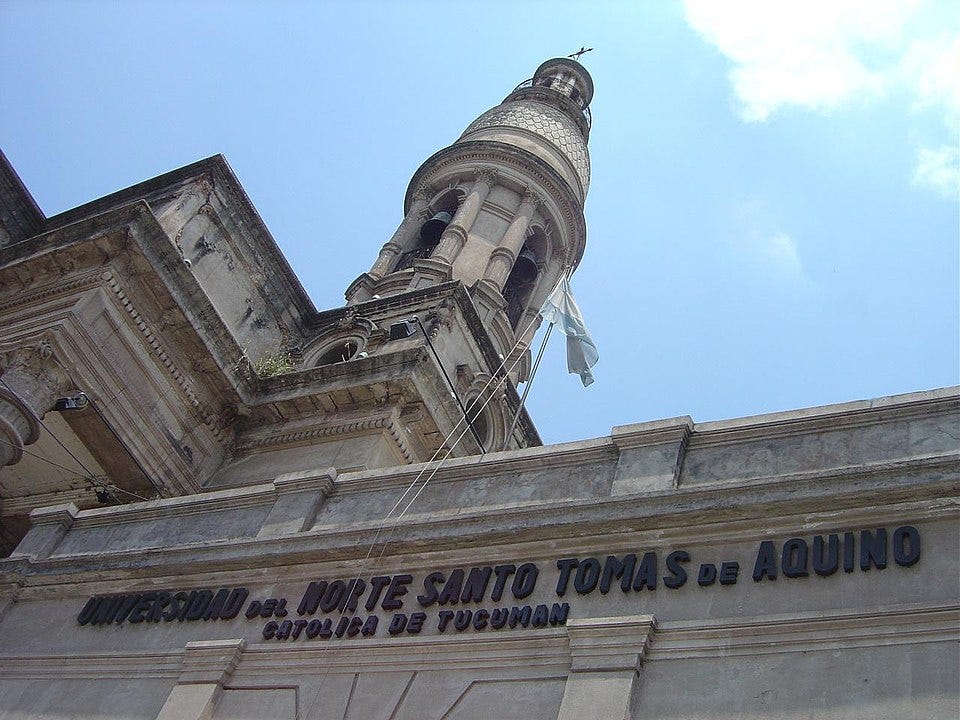The Argentine University
[Der Weg 1948-11] An original translation of „Die argentinische Universität,Ihre kulturelle und soziale Eigenart“
Title: The Argentine University [de: Die argentinische Universität,Ihre kulturelle und soziale Eigenart]
Author: Dr. W. Rohmeder
“Der Weg” Issue: Year 02, Issue 11 (November 1948)
Page(s): 777-778, 783 [LINK]
Dan Rouse’s Note(s):
The magazine Der Weg (El Sendero), was German and Spanish language magazine published by Dürer-Verlag in Buenos-Aires, Argentina by Germans with connections to the defeated Third Reich Government.
The magazine ran monthly issues from 1947 to 1957, with official sanction from Juan Perón’s Government until his overthrow in September 1955.
Argentine universities have carved out a unique identity, distinct from European and North American counterparts, by prioritizing cultural and social responsibilities through expanded educational access and internal reforms that strengthen their societal impact.
The Argentine University
Its Cultural and Social Distinctiveness
By Dr. W. Rohmeder (University of Tucumán)
Over the course of its development, the Argentine university has developed a character uniquely its own, one that increasingly distinguishes it from similar institutions in other nations, particularly those of Europe and North America.
It is well known that North American universities are characterized by a certain freedom in their internal organization, as well as by a great diversity in fields of study, degrees, and academic programs. This diversity is so pronounced that it is extremely difficult to draw parallels between a particular aspect of the North American university and its counterpart in the Argentine university. Even the designations “college” and “university” only partially correspond.
When we also consider the specific regulations governing the course of study—referred to as “carreras” and “planes de estudio” in Argentine terminology—whose functions are partially fulfilled by “credits” and similar systems in North American universities, we can readily discern the distinction between the two.
Compared to European universities, the Argentine university also possesses its own distinct character. To first note the similarities: In both regions, there is a clear separation between the educational levels—primary education (primaria), secondary education (secundaria), and university education (superior o universitaria)—each with its own distinct organizational structure. But with this, the particularity of the Argentine university already begins to stand out: it does not confine itself to being solely a university, the last rung on the educational ladder, but also incorporates, either fully or partially, some of the preceding educational levels within its scope, while preserving the unique characteristics of each.
Here we see one of the unique missions that the Argentine university has undertaken in the realm of culture and society: its extension into various domains of teaching, education, and scholarly pursuits. There are Argentine universities that, alongside their academic functions, also run primary schools; others operate secondary schools (such as National Colleges and lyceums), teacher training institutions (Normal Schools), and industrial and vocational schools. This extensive integration, which has been in place for decades in some instances, bears witness to the sense of responsibility that the Argentine university feels toward the nation and its people.
These schools were established to enable them, as directly as possible and with minimal bureaucratic hindrance, to discover the most effective ways to raise the cultural standards of the populace and to enhance the education of young people who aspire to wider horizons. Much of what has been piloted in these schools has been incorporated into the broader educational system, yielding positive results and benefiting increasingly larger segments of the population. There can be no doubt that this positive influence will continue to spread in this and other areas.
The “ferment of the university” does not infiltrate primary and secondary schools in the form of unreasonable expectations placed on students, but rather through teachers who are conscious of the responsibility they bear as trained educators. These teachers are tasked with applying the knowledge acquired at the university in such a way that the university’s influence resonates in ever-expanding circles.
The new University Law No. 13-013 will facilitate additional positive impacts from Argentine universities.
The scholarships that the state will allocate through the universities to parents or students from less affluent social classes will expand the university’s reach. Primarily, this is because a fully or partially state-funded education opens university access to individuals who previously had no hope of ever setting foot in the university’s halls or attending its lectures. Many students will be able to pursue their studies without the need to work for their livelihood, allowing them to dedicate their full energy to their education: the result will be shorter study periods with better preparation, and graduates will enter the workforce younger and more energetically.
The advantages of these scholarships extend beyond university students to include pupils from the previously mentioned schools and special institutions that are affiliated with the university: this represents another substantial segment of the population that directly gains from the university’s initiatives. Consequently, the university’s cultural and social impact is steadily increasing.
A new segment of the population is being presented with new opportunities: access to the university for those with the ability, whether to pursue an academic career or to gain a solid general education that will allow them to excel in another profession they are inclined toward. In Europe, scholarships are awarded by the universities themselves. In North America, universities, which are well-known for their substantial private funding, offer tuition waivers. In Argentina, it is the nation, through the state, that grants these same benefits to its less affluent citizens.
Another connection between the university, public education, and social engagement is provided by the “Estudiantes Vocacionales” (literally: students by inclination). This designation applies to students who have already graduated from an Argentine university but choose to return for further study, either to refine their skills, to update their knowledge in fields that have evolved since their original studies, or to pursue a second academic career alongside their existing one. While the reasons for this may vary, the essential outcome is the strengthening of bonds between the university and its alumni—those who have graduated and have since made their mark in society. The impact of this will be not only direct but also indirect, influencing the broader circles in which these graduates operate.
As we examine the heart of the university—its professors—we observe a development that promises to imbue the Argentine university with a distinctive character unparalleled in South America: the movement toward professors who are dedicated solely to their academic roles, without external employment. Until recently, the title of “university professor” was often an adjunct, a prestigious addition to one’s primary profession as a doctor, lawyer, engineer, architect, journalist, or the like. Academic work conferred a certain prestige, enhancing one’s social standing, but it was not the individual’s primary occupation; in most cases, it was supplementary. The emerging trend, however, is toward the “profesor con dedicación exclusiva” (professor with exclusive dedication), or at the very least, toward lecturers whose main responsibility is their academic professorship.
Thus, the role of the university professor is increasingly becoming a true profession, a distinct career category. Their work at the university is to be essential, not incidental. This new conception of the professorial role, with all its implications for teaching, research, relations between students and faculty, publications, and everything else pertaining to the exclusively dedicated university professor, will, over time, bring about a transformation that will undoubtedly make itself felt before the end of this decade.
Hand in hand with this change, another internal transformation is taking place within the university, shedding new light on its cultural and social role: until now, study plans have prescribed even the smallest details of the academic path that students must follow. As a result, university studies have often been rigid, scarcely distinguishable from the structured environment of secondary schooling. In the coming years, however, these rigid study plans will gradually disappear, replaced by more flexible frameworks that are better suited to a university setting.
Consider that a citizen who has completed his military service and who has the right to vote for representatives, senators, and even the president, should be deemed incapable of managing his own academic path, deciding what he can undertake each year, and determining the length of his studies based on his own capabilities. Is this not contradictory? Recently, significant changes have been made to study plans, and more are to follow. Elective courses now allow students to deepen their studies in areas of particular interest. Professors, in turn, are freed from the monotonous repetition of standardized curricula. The diversification of academic programs will lead to the disappearance of the “one-size-fits-all” graduate in favor of the specialist. The trend here is toward greater student responsibility, accompanied by increased freedom of movement. As traditional year-end examinations, with their customary deferrals, postponements, and repetitions, are phased out, we can expect to see a new type of student—one who is aware of his responsibilities, both to himself and to the nation that has made his education possible.






